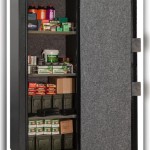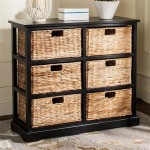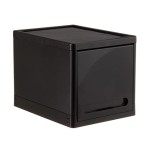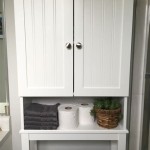Maximizing Space With Sheet Rack Storage System Designs
The efficient storage of sheet materials like metal, wood, plastic, and other composites presents a significant challenge for many industries. In manufacturing, fabrication, and distribution, space is often a premium resource. Poorly organized storage leads to wasted floor area, increased material handling costs, potential damage to valuable inventory, and reduced operational efficiency. Sheet rack storage systems offer a structured and optimized approach to managing these materials, contributing to improved workflow, enhanced safety, and better overall resource utilization.
Sheet rack storage systems are essentially vertical or horizontal shelving units specifically designed to accommodate large, flat materials. They come in various configurations, each tailored to specific material dimensions, weight capacities, and space limitations. Selecting the appropriate type of sheet rack system is crucial for maximizing the benefits and avoiding potential operational bottlenecks.
The primary advantage of implementing sheet rack storage lies in its ability to significantly reduce the footprint required for material storage. By utilizing vertical space, these systems free up valuable floor area that can then be used for production, assembly, or other critical operations. This vertical organization also simplifies inventory management, enabling quick and easy access to specific sheets without having to move or re-stack other materials.
Beyond space optimization, sheet rack systems also contribute to improved safety within the workplace. Storing large sheets haphazardly can create safety hazards, increasing the risk of accidents and injuries. A well-designed sheet rack system provides a stable and organized environment, minimizing the chance of materials toppling over or causing obstructions. This, in turn, promotes a safer and more efficient work environment for employees.
Furthermore, the protection afforded by sheet rack systems helps to preserve the quality and integrity of the stored materials. Sheets are less likely to be scratched, bent, or otherwise damaged when stored in a designated rack. This reduces material waste and minimizes the need for costly replacements. In the long run, this translates into significant cost savings and improved profitability.
Understanding Different Types of Sheet Rack Systems
The selection of a suitable sheet rack system depends on several factors, including the type and size of the materials being stored, the available space, the frequency of access required, and the overall budget. Several distinct types of sheet rack systems are available, each with its own unique features and advantages.
Vertical Sheet Racks: These are among the most common types of sheet rack systems, characterized by their vertical orientation. They consist of a series of upright supports with horizontal bars or ledges that hold the sheets upright. Vertical racks are particularly well-suited for storing large, thin sheets such as metal, plywood, or plastic. They maximize vertical space utilization and provide easy access to individual sheets. Some vertical sheet racks are designed with adjustable dividers, allowing for the storage of sheets of varying thicknesses.
Cantilever Racks: Cantilever racks are designed for storing long, bulky items, and can also be adapted for sheet material storage. They feature a vertical column with arms extending outward, providing support for the sheets. These racks are particularly useful for storing materials of varying lengths and weights. The absence of a front column allows for unrestricted access to the stored sheets, making them ideal for applications where frequent access is required.
Pigeon Hole Racks: Pigeon hole racks consist of a series of individual compartments, each designed to hold a single sheet or a small stack of sheets. These racks are well-suited for storing a variety of sheet materials in an organized and easily accessible manner. Pigeon hole racks are often used in environments where different types of materials need to be stored separately, such as in prototyping shops or research labs.
Drawer Racks: Drawer racks feature a series of drawers that slide out, providing access to the stored sheets. These racks are particularly useful for storing smaller sheets or offcuts. The enclosed design of drawer racks helps protect the materials from dust and damage. Drawer racks can be customized with different drawer depths and widths to accommodate specific material sizes.
Automated Sheet Racks: For high-volume applications, automated sheet rack systems offer the ultimate in efficiency and space optimization. These systems use automated storage and retrieval (AS/RS) technology to move sheets in and out of the rack. Automated systems can significantly reduce handling time and improve inventory accuracy. However, they also require a significant capital investment.
Key Considerations for Sheet Rack System Design
The design of an effective sheet rack storage system requires careful consideration of several factors to ensure optimal performance and safety. A thorough assessment of material characteristics, space constraints, and operational requirements is essential for selecting the right type of rack and configuring it for maximum efficiency.
Material Characteristics: The dimensions, weight, and type of materials being stored are primary determinants of the rack's design. The rack must be strong enough to support the weight of the materials without buckling or collapsing. The rack's dimensions must also be sufficient to accommodate the size of the sheets being stored. Different materials may require different types of rack surfaces to prevent scratching or damage. For example, polished metal sheets might require racks with padded surfaces.
Space Constraints: The available floor space and ceiling height are critical constraints that must be taken into account during the design process. The rack should be designed to maximize the available space while also allowing for adequate aisles and access points. If space is limited, vertical sheet racks may be the most appropriate option. The layout of the rack should also consider the flow of materials within the facility to minimize travel distances and improve efficiency.
Operational Requirements: The frequency of access to the stored materials is another important consideration. If sheets are accessed frequently, a rack system that provides easy and quick access is essential. Cantilever racks or drawer racks may be suitable options in such cases. The layout of the rack should also consider the equipment used to handle the materials, such as forklifts or cranes. Adequate clearance should be provided for these equipment to maneuver safely around the rack.
Safety Considerations: Safety should be paramount in the design of any sheet rack storage system. The rack should be designed to withstand the weight of the materials without tipping or collapsing. Safety barriers or guards should be installed to prevent materials from falling off the rack. The rack should also be designed to comply with all relevant safety regulations. Regular inspections and maintenance are essential to ensure the ongoing safety of the rack system.
Load Capacity and Weight Distribution: Accurate calculation of load capacity is paramount. Overloading a sheet rack can lead to structural failure and potentially dangerous situations. Understanding the weight distribution of different sheet materials is critical for ensuring even weight distribution across the rack’s supporting members. Consulting with a structural engineer during the design phase is often recommended to ensure the rack's structural integrity.
Implementing and Maintaining Sheet Rack Systems
The successful implementation of a sheet rack storage system extends beyond the initial design and installation phase. Proper implementation and ongoing maintenance are crucial for maximizing the benefits of the system and ensuring its long-term reliability and safety. This involves careful planning, employee training, and regular inspections.
Planning and Installation: A detailed plan should be developed before installing a sheet rack system. This plan should include a layout of the rack, a schedule for installation, and a budget for the project. The installation should be performed by qualified professionals to ensure that the rack is properly assembled and secured. Consider potential future expansions during the planning phase to accommodate growth.
Employee Training: Employees who will be using the sheet rack system should be properly trained on its safe and efficient operation. This training should cover topics such as proper loading and unloading techniques, the use of safety equipment, and the identification of potential hazards. Refresher training should be provided periodically to reinforce safe work practices. Training should also include instruction on inventory management and retrieval procedures within the rack system.
Regular Inspections and Maintenance: Regular inspections should be conducted to identify any signs of damage or wear. Damaged or worn components should be repaired or replaced promptly to prevent accidents. The rack should also be cleaned regularly to prevent the build-up of dust and debris. A preventative maintenance schedule should be established to ensure that the rack is properly maintained over its lifespan. This schedule should include tasks such as tightening bolts, lubricating moving parts, and inspecting for corrosion.
By carefully considering the type of materials being stored, the available space, and the operational requirements, it is possible to design and implement a sheet rack storage system that maximizes space utilization, improves safety, and enhances overall efficiency. Embracing a proactive approach to maintenance and employee training will further contribute to the long-term success of the system.

Maximize Space With Vertical Sheet Storage Solutions

Creative Storage Solutions For Small Closets Maximize Your Space Lancia Homes Fort Wayne In
Sheet Metal Storage Racks Solve Floor Space Problems

Unlocking Space And Organization Exploring Sheet Metal Racking China Pallet Rack Warehouse Mezzanine Manufacturer

Unlocking Space And Organization Exploring Sheet Metal Racking China Pallet Rack Warehouse Mezzanine Manufacturer

Diy Garage Ceiling Storage And Wall Organization Angela Marie Made

Sheet Steel Storage Rack Metal Racks Pipe Cantilever Shelf Manufacturers

Unlocking Space And Organization Exploring Sheet Metal Racking China Pallet Rack Warehouse Mezzanine Manufacturer

Sheet Steel Storage Rack Metal Racks Pipe Cantilever Shelf Manufacturers

Vertical Storage Racks Strong Durable
Related Posts








